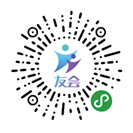星状神经节阻滞:室性心律失常的干预治疗
本文由“罂粟花”授权转载
星状神经节阻滞:室性心律失常的干预治疗
翻译:佟睿 编辑:冯玉蓉 审校:曹莹
综述目的:强调使用星状神经节阻滞(SGB)治疗难治性室性心律失常的适应症、操作要点及数据支持。
近期研究:对于顽固性室性心律失常患者,单侧或双侧SGB可减少心律失常发生率和24-72小时内的除颤事件,以便有时间使用其他方法进行治疗,如导管消融、外科交感神经切除术或心脏移植。无论室性心律失常的类型(单形性与多形性)或病因(缺血性与非缺血性心肌病)如何,SGB的疗效似乎是一致的。超声引导下的SGB是安全的,发生并发症的风险很低,即使在患者接受抗凝治疗的情况下也可应用。
总结:SGB治疗顽固性室性心律失常安全有效,可考虑用于治疗难治性室性心律失常。
原始文献来源:Arun Ganesh, Yawar J. Qadri, Richard L, et al. Stellate Ganglion Blockade: an Intervention for the Management of Ventricular Arrhythmias.[J]. Curr Hypertens Rep, 2020, 22: 100.
Stellate Ganglion Blockade: an Intervention for the Management of Ventricular Arrhythmias
Abstract
Purpose of Review: To highlight the indications, procedural considerations, and data supporting the use of stellate ganglion blockade (SGB) for management of refractory ventricular arrhythmias.
Recent Findings: In patients with refractory ventricular arrhythmias, unilateral or bilateral SGB can reduce arrhythmia burden and defibrillation events for 24–72 h, allowing time for use of other therapies like catheter ablation, surgical sympathectomy, or heart transplantation. The efficacy of SGB appears to be consistent despite the type (monomorphic vs polymorphic) or etiology(ischemic vs non-ischemic cardiomyopathy) of the ventricular arrhythmia. Ultrasound-guided SGB is safe with low risk for complications, even when performed on anticoagulation.
Summary: SGB is effective and safe and could be considered for patients with refractory ventricular arrhythmias.

精彩评论
相关阅读






 打赏
打赏


















 010-82736610
010-82736610
 股票代码: 872612
股票代码: 872612






 京公网安备 11010802020745号
京公网安备 11010802020745号
